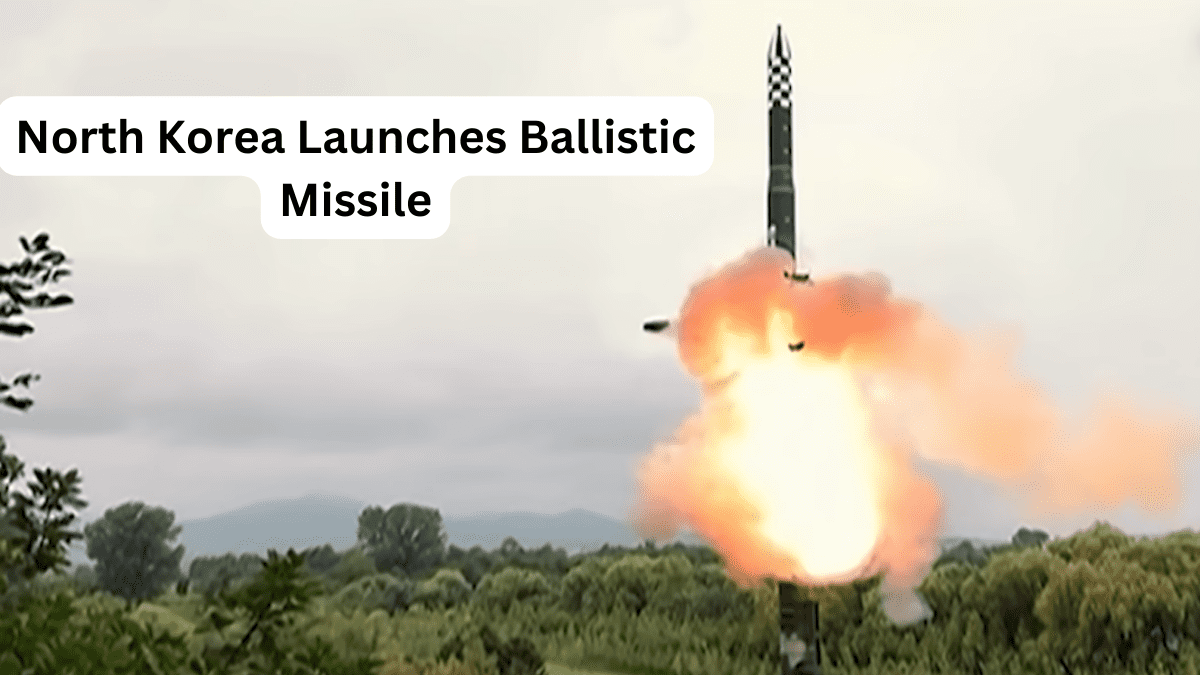In a recent provocative move, North Korea Launches Ballistic Missile which experts believe to be an intercontinental ballistic missile (ICBM), showcasing the advancing prowess of its secretive and contentious weapons program.
Table of Contents
The Range and Potency of the North Korea Launches Ballistic Missile
Analysts from the Japanese Defense Ministry have speculated that this missile, propelled on Monday, exhibits a range extensive enough to potentially strike anywhere within the United States. According to Shingo Miyake, the parliamentary vice-minister of defense in Tokyo, the missile’s trajectory suggests a capability to cover over 15,000 kilometers (9,320 miles), effectively putting the entirety of the US territory within its potential range.
| Topic | Summary |
|---|---|
| Missile Range | Speculated to cover over 15,000 kilometers, potentially targeting the entire US territory. |
| Technical Evaluation and Limitations | Concerns over reentry survivability and accuracy at extended distances highlighted by experts. |
| Missile Program Advancements | Consecutive successful flight tests indicate growing reliability in North Korea’s missile program. |
| Transition to Hwasong-18 from Hwasong-17 | Shift to solid-fueled missiles for enhanced stability and quicker launch capabilities. |
| Geo-Political Ramifications and Response | Heightened tensions leading to condemnations, spurring trilateral cooperation among the US, Japan, SK. |
| Conclusion | North Korea’s pursuit of advanced missile tech poses security concerns, requiring vigilant global monitoring. |
Technical Evaluation and Limitations
However, deeper analysis reveals complexities. While the missile’s highly lofted trajectory reached an altitude of 6,000 kilometers (3,700 miles) and traveled approximately 1,000 kilometers (621 miles) before submersion into the sea west of Hokkaido, experts highlight critical caveats. Joseph Dempsey, a research associate at the International Institute for Strategic Studies, points out the distinction between lofted tests and the actual challenges an ICBM trajectory entails, underscoring concerns of reentry survivability and accuracy over extended distances.
Missile Program Advancements and Reliability
This likely third test of the Hwasong-18 missile marks a milestone for North Korea’s missile program. Jeffrey Lewis, a professor specializing in nonproliferation studies, emphasizes the significance of consecutive successful flight tests, indicating a level of reliability in North Korea’s missile development efforts.
Evolution from Hwasong-17 to Hwasong-18
North Korea’s transition from the liquid-fueled Hwasong-17 to the more advanced solid-fueled Hwasong-18 denotes a significant leap. Solid-fueled missiles offer enhanced stability and swifter launch capabilities, contributing to North Korea Launches Ballistic Missile’s ambition of bolstering its nuclear strike potential while evading detection.
Geo-Political Ramifications and International Response
This aggressive display of military prowess has garnered swift responses. South Korea reported a prior short-range ballistic missile launch, leading to condemnations from North Korea Launches Ballistic Missile against perceived provocations by the US and South Korea. The heightened tensions have spurred trilateral cooperation between the US, Japan, and South Korea, intensifying discussions on extended deterrence measures and joint military exercises.
Conclusion
North Korea’s relentless pursuit of advanced missile technology underscores its determination to establish military parity with global powers. As the nation advances its capabilities, the global community faces heightened security concerns. The evolving situation demands vigilant monitoring and proactive diplomatic engagement to mitigate potential conflicts and foster regional stability.






















+ There are no comments
Add yours